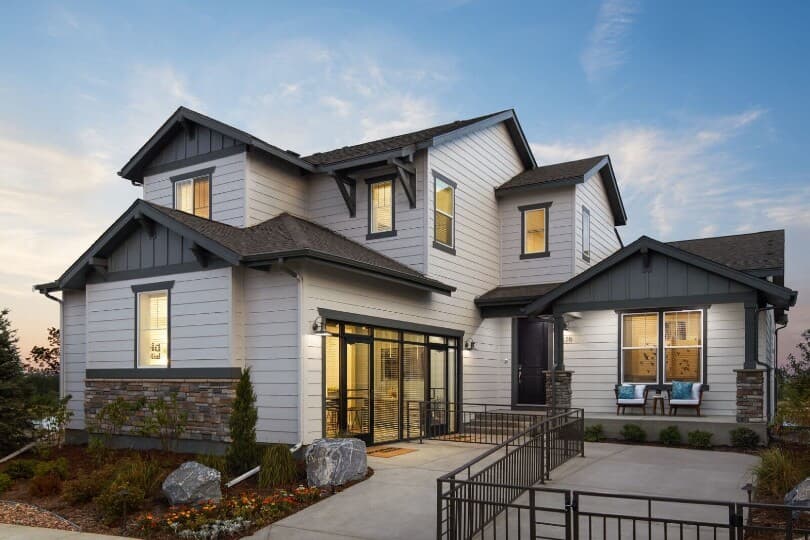susanax032747
susanax032747
Leases Vs. Rental Agreements: what’s The Difference?

Leases vs. Rental Agreements: What’s the Difference?

Flexibility and stability for the landlord
Erin Eberlin is a realty and property owner professional, covering rental management, tenant acquisition, and residential or commercial property financial investment. She has more than 16 years of experience in genuine estate.
Hispanolistic/ Getty Images
The terms rental agreement and lease contract are often utilized interchangeably, however they are rather various. A rental contract is one kind of contract a property owner can sign with a renter. A lease arrangement is an arrangement the majority of people connect with renting a residential or commercial property.
Rental agreements use more flexibility for landlords and tenants, while lease arrangements use more stability. Learn the essential differences between these two types of living arrangements.
What’s the Difference Between Rental and Lease Agreements?
Length of Rental and Lease Agreements
Rental agreements are normally short-term. It prevails for these arrangements to be legitimate for a period of thirty days. In specific cases, they can be even shorter, lasting as little as a week.
Lease contracts are for a much longer term than rental agreements. The most common lease term is for one year, but leases can be for any length of time as long as the landlord and renter concur to the length. They can be as short as 6 months or as long as thirty years, which would be more common in business leases. The longer the lease, the more most likely it is that your state will require it remain in writing.
Renewing a Lease or Rental Agreement
Generally, rental agreements restore instantly once the initial term ends. All the terms of the initial contract are still legitimate, including the length of the agreement. So, if the initial term was for a period of one month, the contract will automatically restore for another 1 month.
Lease arrangements do not instantly restore. Once the initial lease term is over, the occupant would need to sign a brand-new lease with the proprietor if the landlord or occupant wanted a long-term agreement.
Terms of the Contract for Lease and Rental Agreements
The property owner can alter the terms of the rental agreement. It includes changing the length of the agreement or the rental price. To make any modifications, however, the landlord must provide the renter appropriate notice.

This written notice will vary based upon state law but is usually one month; Some states might need as much as 60 days’ notification to make any modifications. If any changes have actually been made, the occupant should sign and accept the new rental agreement.
The clauses of the lease arrangement can not be quickly altered throughout the term of the lease. For example, if the tenant had signed a year-long lease and the property manager wanted to increase the renter’s lease, the property manager would have to wait till about a month before the original lease term ended. The proprietor would then have to send the occupant a notice of lease boost at least 1 month prior to lease renewal before any lease boost could work.
Lease contracts often include lead paint disclosures and information about any other known health or security issues at the residential or commercial property.
What Do Leases and Rental Agreements Have in Common?
Leases and rental contracts are both legally binding agreements. Each contract can consist of the following info:
– Who the contract is between
– The start end date of the term
– Rent quantity
– Amount of the security deposit
– Names of the tenants who will live at the residential or commercial property
– Rules of proprietor entry
– Pet policies
– Move-out treatments
– Rules for returning the down payment
Why Would a Rental Agreement Be Preferred to a Lease?
While a lease agreement is more typical, a short-term rental arrangement in between proprietor and tenant may be preferred for a number of reasons.
In particular circumstances, a property owner may prefer to have a tenant occupy the unit for a shorter time period. The landlord might want to move into the unit in the future or may be attempting to create some additional money on the unit before starting restorations. The property manager would normally have to send out the renter a Notification to Vacate the system 30 days prior to the desired move-out date. The exact amount of notice would depend on state law.
Rental contracts give proprietors more versatility in the lease rate. The proprietor might have the option of increasing the lease every thirty days, and it would be up to the present tenant to accept pay the greater lease or move in other places. The landlord might likewise try to charge greater rents during rental durations when there is high need and then charge lower rents if they have a job during durations of lower demand. The exception to this would be if the unit is under any sort of lease control or other lease policies.

Sometimes people only require a leasing for a brief quantity of time. Examples include situations such as a home remodelling, internship, or temporary job task. Since lots of property owners will just sign a lease for a year or more, there might be less alternatives available for these kinds of occupants. Due to the restricted options, you might be able to gather a significantly greater lease if you are ready to lease your system short-term.
Why You Might Prefer a Lease Agreement

Rental agreements have their downsides as well, therefore some property owners might choose a lease agreement.
Since many rental arrangements are only for one month, you need to prepare yourself to have a vacancy at any time without any lease can be found in. A renter typically only has to offer 1 month’ notice before moving out.
Tenants who sign rental arrangements want the flexibility of having the ability to move rapidly. Therefore, you must be prepared for a limitless cycle of discovering brand-new tenantsfor your residential or commercial property. A lease may assist you keep tenants longer, with less turnover in the rental residential or commercial property.
The Bottom Line on Rental vs. Lease Agreements
Regardless of whether you choose a rental or a lease agreement, put it in writing. The arrangement needs to likewise be signed and dated by both celebrations. While particular oral agreements can be binding, the actual terms accepted are much more difficult to show.
Whether you are creating a rental contract or a lease contract, you must likewise follow your landlord-tenant law in your state. If you put a provision in your contract that is prohibited based on your state’s law, it will not be binding, even if the tenant has signed the contract. For instance, if your state places a maximum down payment quantity as one month’s lease, and you gathered 2 months’ lease from your renter, you need to return any excess quantity gathered to the renter.
Frequently Asked Questions (FAQs)
How do you compose a rental agreement?
You can compose your own rental arrangement or a property attorney can assist you draft one for your tenant. You’ll wish to consist of info like the month-to-month rent amount, guidelines around family pets, security deposit guidelines and amount, move-out guidelines, charges and insurance coverage that may be required, and more. The more you consist of, the more you can protect yourself as a property owner.
What does a lease arrangement look like?
A lease agreement is a multi-page document-either paper or digital PDF-that states the type of lease (domestic or commercial), celebrations included, residential or commercial property and occupant info, and more. It’s comparable to a rental contract however may consist of different terms. It’s typically written in plain language.
New Jersey Department of Community Affairs Division of Codes and Standards Landlord-Tenant Information Service. “Lease Information Bulletin.”
Virginia Legislative Information System. “Code of Virginia: 55.1-1302.




